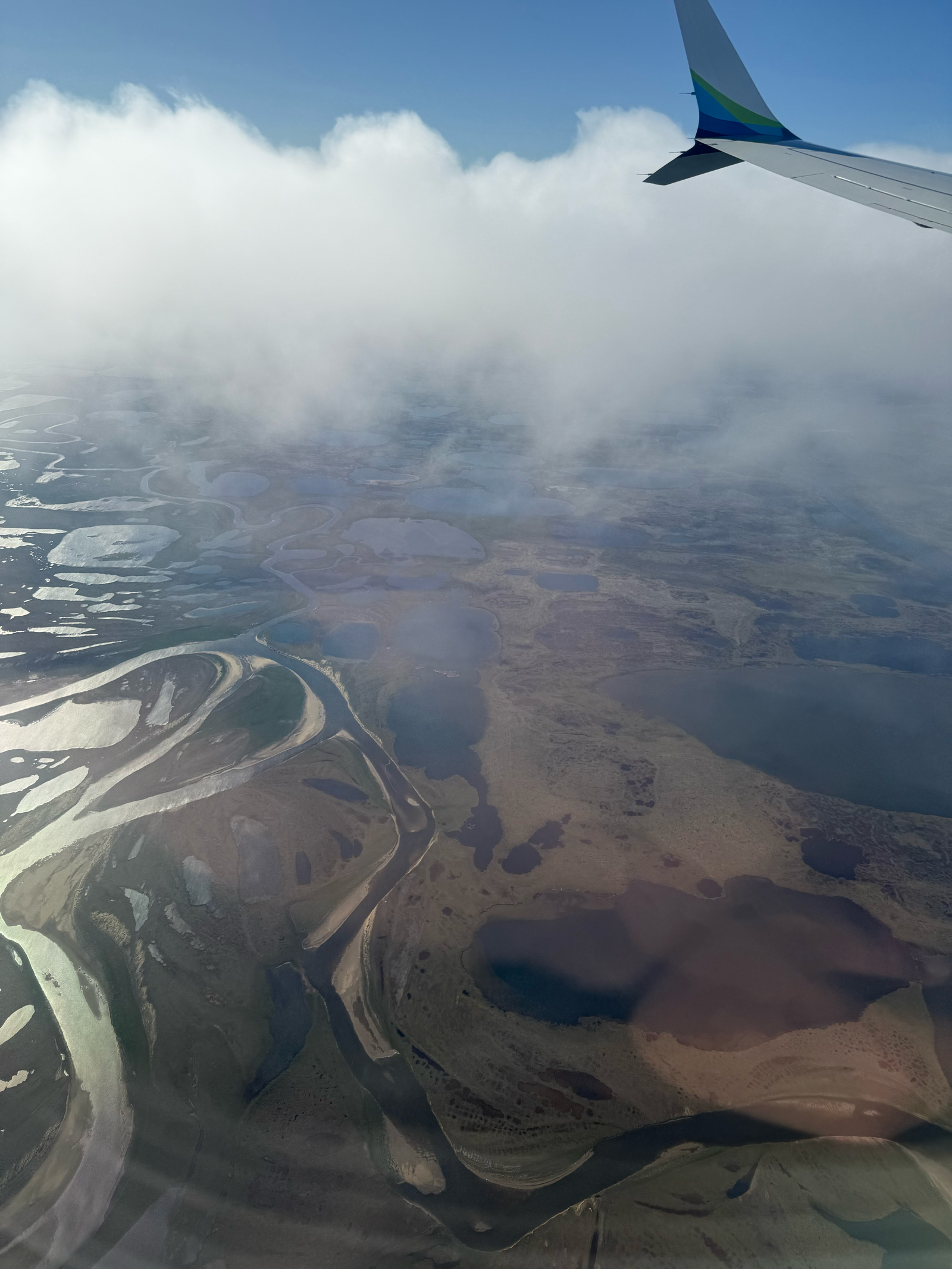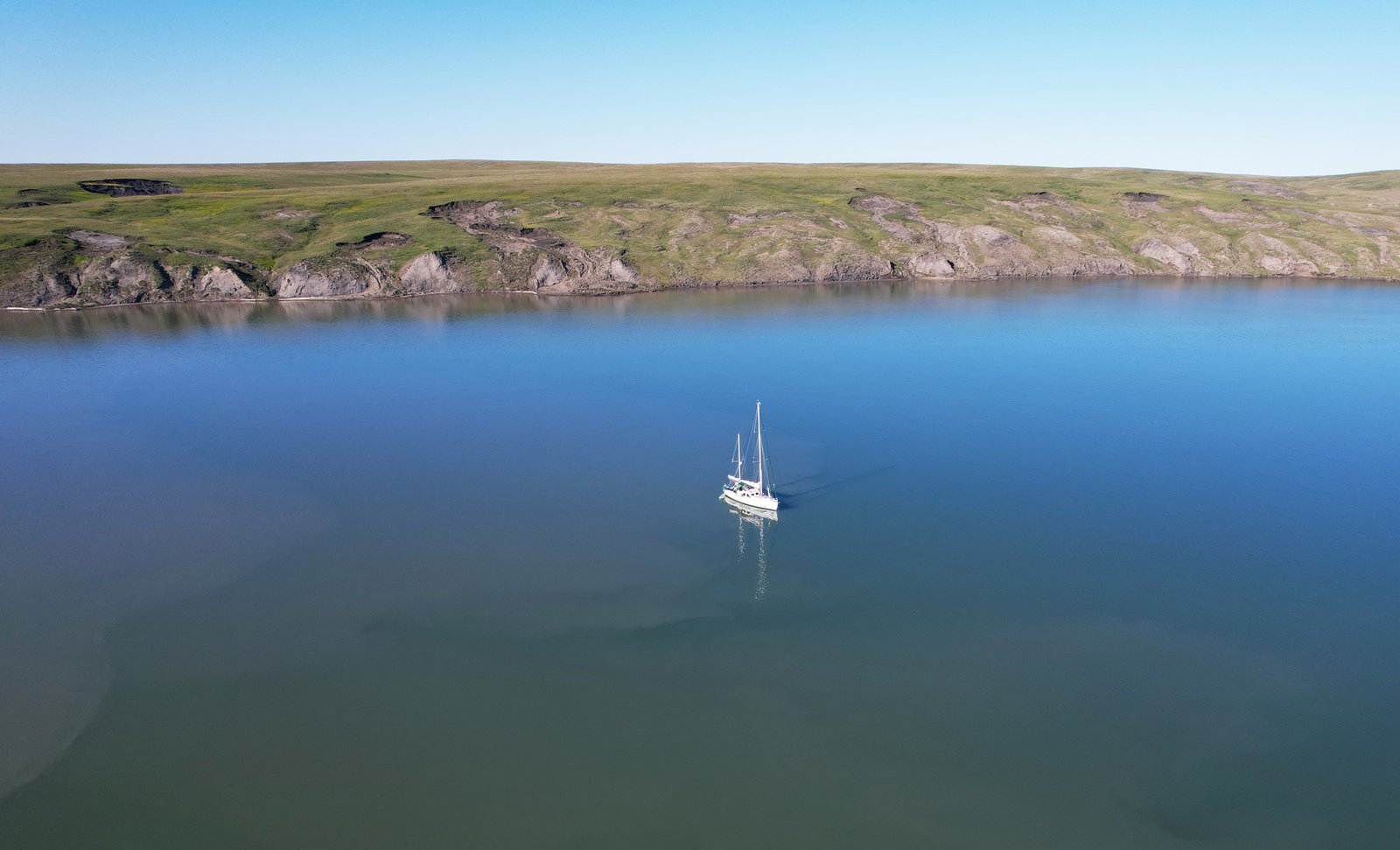Since returning to One Ocean, one thing has become impossible to ignore. At nearly every stop, we are seeing widespread coastal erosion and visible effects of permafrost melt. These are not subtle changes. They are dramatic shifts in the Arctic landscape, and they are happening fast. What is more alarming is how deeply these changes are affecting the people who live here, the land they rely on, and the ecosystems they are part of.
Flying into Utqiaġvik, I saw a flat, marshy landscape dotted with hundreds of small lakes. At first, I wondered what had caused them. Later I learned they are called thermokarst lakes. These lakes form when ice-rich permafrost thaws and the land sinks, creating depressions that fill with water. Once the surface collapses, the water itself accelerates the thawing of deeper layers of permafrost, expanding the lake further. These features are now widespread across Arctic permafrost regions.

In Utqiaġvik, Alaska, the northernmost town in the United States, the shoreline is actively falling apart. Large sections of land are crumbling and pouring into the sea. When we arrived, we saw massive amounts of sandbags and rusting steel barrels scattered along the beach, with excavators and heavy machinery working to hold the line. The community is doing everything it can to delay the loss, shifting materials and placing barriers in hopes of slowing the erosion. These efforts are massive, but the land continues to disappear.
While we were there, Tess and I had the chance to speak with a local named Clarence. He told us that the tall shoreline used to extend at least 15 feet farther out. Every year, he said, powerful fall storms rip through the coast and carry more of it away. The waves are getting bigger, the storms stronger, and the erosion more intense. Standing on the beach, looking out at the crumbling shoreline, I could hardly imagine the fear of living in a house balanced at the top of a muddy cliff, wondering if the next storm might sweep it away. For many people here, that fear is real and constant. When we speak to locals about the changes they are witnessing due to climate and weather, the first word out of their mouths is almost always the same: erosion.

These changes are being driven by two closely connected processes, both of which are being accelerated by climate change. Permafrost thaw and coastal erosion are reshaping the Arctic. Permafrost is ground that has remained frozen for at least two consecutive years. In much of the Arctic, it has been frozen for thousands of years, locking ice, soil, and organic matter in place. It has served as a stable foundation for homes, roads, and ecosystems. But with global temperatures rising, that once-frozen ground is thawing. As the ice within the soil melts, the land becomes unstable. It starts to slump, collapse, and slide away.
At the same time, the disappearance of sea ice has left the coastline exposed to stronger storm waves. In the past, sea ice would act as a natural barrier, shielding the shore from erosion. Now, as the Arctic becomes increasingly ice-free in the fall, waves crash directly onto the soft, thawing coast. The result is a rapid reshaping of the land. Communities like Utqiaġvik, which are built on soft, ice-rich tundra, are especially vulnerable.
When we reached Herschel Island, also known as Qikiqtaruk, we were greeted by beautiful rolling hills and the low-lying plants of the Arctic tundra. But among the beauty were striking signs of damage. Deep scars ran down the hillsides. Landslides, some small and others large enough to carve massive gaps into the slopes, had cut into the land. These are examples of thermokarst, which forms when ice-rich permafrost melts and causes the ground to collapse. As the ground thaws unevenly, it becomes unstable and leads to further erosion. Herschel Island is a clear example of how warming temperatures are transforming terrain that once seemed permanent.

In Nome, the crew saw another sign of how communities are working to adapt. Barges were being filled with massive rock boulders. They asked about the operation and learned the rocks were being shipped north to Utqiaġvik to construct a multi-million dollar breakwater. This barrier is being built to help reduce the impact of coastal erosion. In Tuktoyaktuk, a community in Canada’s Northwest Territories, a large rock breakwater already surrounds the entrance to the harbor. These are not optional structures. They are necessary for survival. Arctic communities must invest in these expensive, labor-intensive solutions just to have a chance at holding on to the land they live on.
What we are witnessing is not just the erosion of soil. It is the erosion of stability, of safety, and of long-standing cultural ties to the land. Homes are sinking or sliding. Roads are breaking apart. Fuel tanks are shifting. Gravesites are being lost to the sea. These impacts are not distant possibilities. They are already happening, and they are deeply personal for the people affected.
Beyond the human cost, permafrost thaw also presents a major global environmental risk. As it melts, it releases large amounts of carbon dioxide and methane. These greenhouse gases have been locked in frozen soils for thousands of years. Once released, they intensify global warming and create a dangerous cycle. More warming leads to more thawing, which leads to more emissions and even more warming. The Arctic is now warming nearly four times faster than the rest of the planet. The urgency of what is happening here cannot be overstated.
The people we meet in the Arctic are living at the frontlines of climate change. They are witnessing the transformation of their home in real time. They are adapting with strength, ingenuity, and deep local knowledge. Their stories deserve to be heard and understood. The ground beneath their feet may be melting, but their voices are clear.
What is happening in the Arctic is not isolated. It is part of a much larger climate story that affects us all. As the land changes, so must our awareness of what is at stake.
From the Field,
Grace
